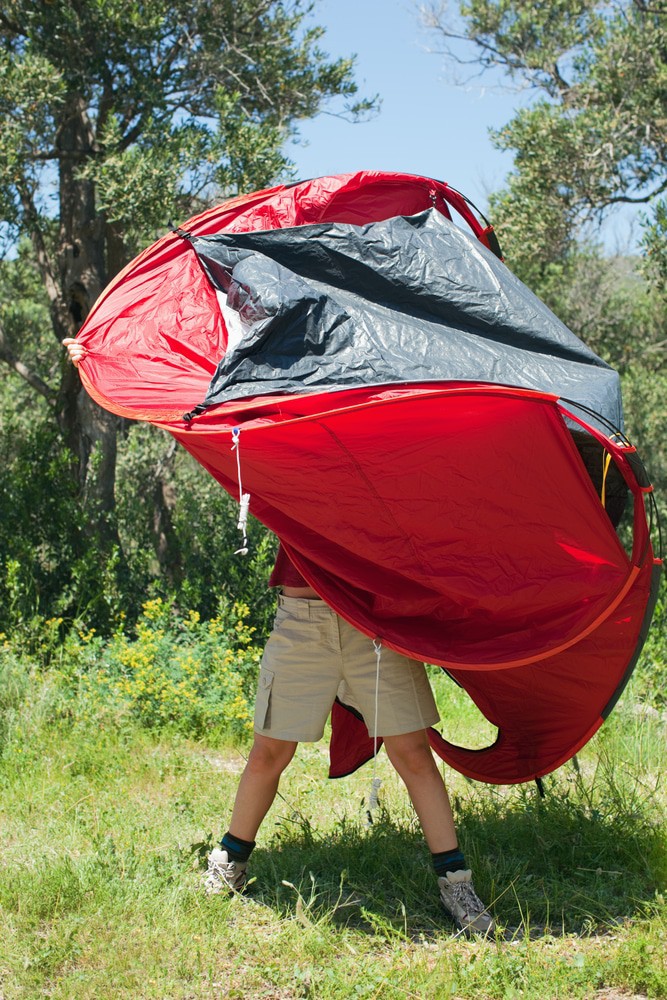Whether you want to rough it or have a little comfort, there is a range of campsites to suit. For those who want to get back to basics there are hundreds of national parks and bush camps with excellent campgrounds that include powered and unpowered sites. There are also hundreds of Caravan and Holiday Parks that offer pools, playgrounds, camp kitchens and laundries.
Whichever you choose, the following information and tips applies to ensure your camping experience with your tent is easy and enjoyable.
Pre-Departure
• Check that you have all the relevant equipment – refer to the Camping Checklist.
• Make sure your tent fits your family or the amount of people on the trip.
It is always recommended to go one size up i.e. for a family of four go with a minimum of a five or six-man tent to ensure a more comfortable sleep.
• A tent with an annex for additional room is a great idea to store gear.
• Practice setting up the tent in the backyard if new or you are new to camping and it is always advisable to read the instructions as it will save time. This will also allow you to learn how to repack the tent – as this could be another new challenge.
• Test your tent to check if it is water proof or for holes by using a spray hose.
• Essential tent tools – mallet for hammering pegs and a small broom to sweep the ground and inside the tent. Paint hammer handle and annex pegs white. They are easier to see in long grass or at night.
• Label your tent poles to make for a faster set up when you arrive. Use same coloured tape to identify poles of the same length.
Arriving at the Campsite
• Arrive at your site with plenty of daylight left as pitching a tent in the dark, especially for first timers, is not recommended.
• Choose your spot, clear the ground of sticks and rocks to place your tent and ensure there are no ant nests.
• If setting up in a shady spot take care due to falling branches and inclement weather conditions as trees can act as lightning rods during storms.
• A level spot is best and if on a slope, sleep with your feet downhill.
• Avoid setting up in depressions or valleys where water will collect or in a positon where water will build up from heavy rain, or a natural waterway. If in a beach location consider tides.
Pitching the Tent
• Consider putting a ground tarp/sheet under your tent as this will provide an extra layer between the ground and your tent. A tarp is also easier to clean at the end of your trip than a tent.
• Ensure the tarp does not extend out from under your tent as this will cause water to be captured under your tent.
• Include the kids by giving them simple tasks like holding pegs or handing you tent poles.
• Use all your pegs and drive them well into the ground, and position them as far out to ensure a tight, taut tent.
• Put glow sticks or solar lamps around tent pegs, ropes etc to prevent bumping into them – especially at night. Will also add light to your campsite.
• To ensure you have a comfortable sleep, lay sleeping material such as an air mattress and cover with a sleeping bag.
• Always keep the zipper to your tent closed.
Packing the Tent
• Collect all the tent pegs and count them to ensure none are left in the grass or surrounding area.
• Straighten out any bent peg prior to packing.
• Try and clean your tent and tarp as much as possible prior to packing. Use a small broom to brush inside and out.
• When leaving any camp site, check after moving that nothing has been left behind and ensure all rubbish is removed.
Arriving Home
• Hang your tent and tarp on the clothesline and clean as required.
• Re-pack and replace any equipment ready for your next camping adventure.
• Never pack tents or camping equipment away when wet as this will cause mildew and destroy your equipment.




